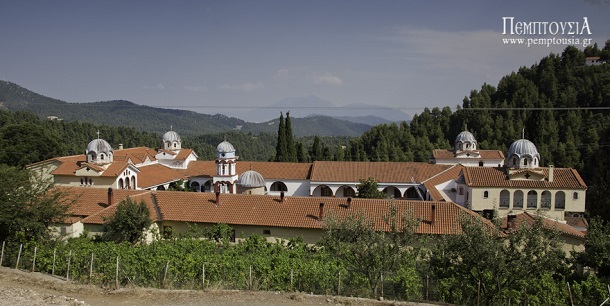Monasteries and economical management: self-sufficiency equates with frugality
1 February 2017[Previous post: http://bit.ly/2jKhZJt]
In the Orthodox Church today, we can distinguish two basic institutional units which manage financial matters: monasteries and parishes. We’ve chosen to examine the case of monasteries, not for any qualitative preference- that’s not an issue in Orthodox Christian life- but because it’s the oldest form of social organization within the Church and it bears all the marks of the history and development of the relationship between Church and finances.

When we talk about monasteries, we always mean the coenobia, that is those which retain the spirit of a common life in worship, basically, but also the refectory, tasks and assignments, spiritual orientation and, finally, which is what interests us, in financial management. The Orthodox countries, from Russia to the Balkans, Greece and Cyprus are full of old and more modern monasteries, which own substantial property and engage in significant and varied financial activities. Crafts, the writing and publication of books, agriculture, land use, and the management of forests and natural resources are some of the economic activities of the monasteries. We might also include in these the various gifts of money which are made by the faithful, prosperous and otherwise.
Monasticism was involved with finances from as early as the first centuries of its presence in history. It’s self-evident that even in the most extreme form of the ascetic life- that of hermits- there is a requirement for some sort of material structure, however elementary, and that this, in turn, presupposes economic relations[4]. Nevertheless, love of riches, dependence on money and the ownership of private possessions are held to be incompatible with the monastic life. What is interesting in this particular setting is how monasticism managed to remain within the orbit of its basic aim, a loving union with God and people within the spirit of strict observance of the Gospel commandments, while at the same time avoiding any dualistic- we might say Manichaean- dismissal of its relationship with history and human society through a total rejection of all economic activity.
Having investigated the historical sources, the lecturer Dimitrios Moskhos notes that the economic organization of the first monastic communities didn’t arise from need but from choice. The aim was for the communities to become financially self-sufficient. Self-sufficiency was considered an important element in the daily life of monastics and of Christians in general, to the point where it was highlighted as a request in prayer: so that, having self-sufficiency, we shall have an abundance of good works”[5]. It is not, however, reduced to being an end in itself, but rather is linked with progress in the spiritual life. Besides, in the Christian life, self-sufficiency equates with frugality[6]. Tasks selected for monks were usually simple, so as not to provide a distraction from their spiritual duties and so that all of them could work. Apart from that of meeting their basic needs, the aim was mutual assistance, where the economically stronger communities assisted those which were weaker. The fundamental element in all this was the voluntary renunciation of all personal possessions and the common management of material goods. This was a task usually undertaken by someone who was of proven spiritual standing and who was acceptable to the whole community.
(To be continued)






